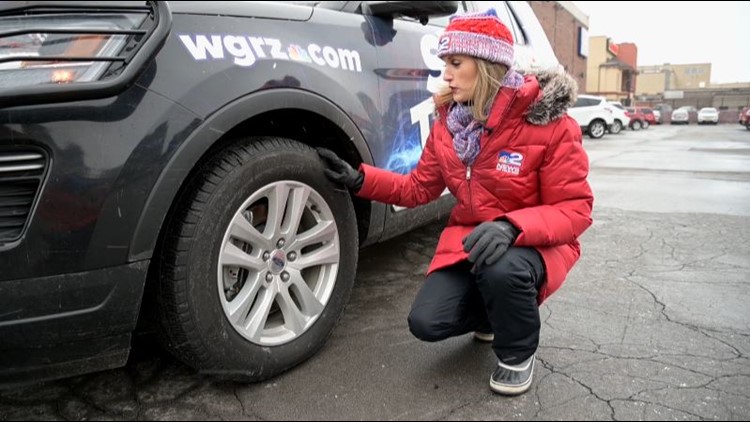Have you ever started your car to warm up the engine in the morning only to be greeted by the tire pressure light? Have you noticed that tends to happen far more often during our coldest days? There’s a direct connection between the air pressure in your tires and the surrounding air temperature.
Related: What is the polar vortex?
Put simply: when the air temperature goes down, air pressure decreases. That’s because the individual gas molecules making up the air in an enclosed space have less energy at lower temperatures. Less energy means that the molecules aren’t moving around as much; thus there’s less pressure on the walls containing them. Measurements have shown that for every 10 degrees Fahrenheit drop in temperature, the air pressure in a tire drops 1 to 2 PSI, or pounds per square inch.
Maybe your tire pressure light has come on in the morning, but later that same afternoon, it was off again. That’s because the air temperature rises slightly throughout the day and the tires re-inflate ever so slightly as a result. Another reason, of course, could be a faulty sensor. Either way, don’t ignore that indicator light for too long!
Related: How to “winterize” your car
Most car tires should be inflated to around 32 PSI year-round, but every manufacturer's recommendation is slightly different. Want to avoid seeing that pesky indicator light? Overfill your tires by a couple of PSI going into the cold season. That will keep them inflated to a safe level even as bitterly cold air flattens them just a little.
New episodes of Heather’s Weather Whys are posted to the WGRZ YouTube channel every Wednesday evening. You can also watch it on Thursdays at 5:30 on Channel 2 News.
If you have a weather question for Heather to answer, send it to her at heather.waldman@wgrz.com or connect with her on Facebook or Twitter.



